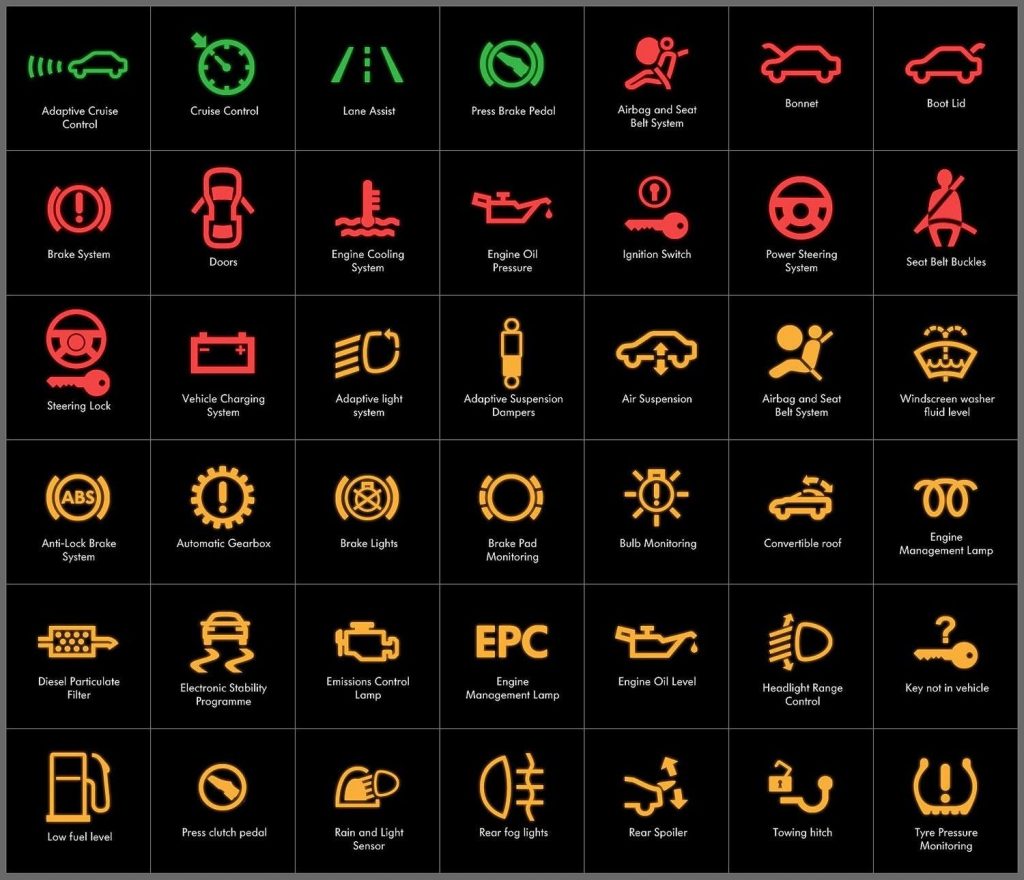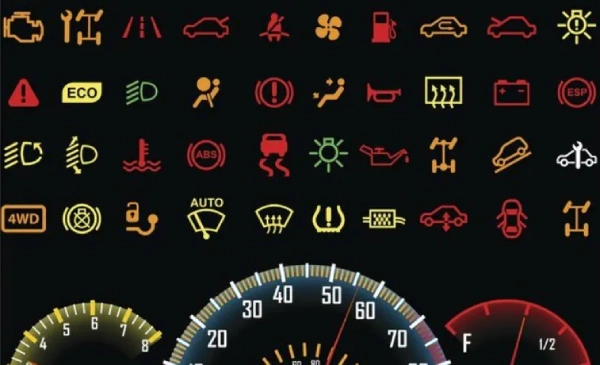
Car Lights Meaning: Understanding Your Vehicle’s Signals. When you slide into the driver’s seat, one of the first things you notice is the dashboard filled with a series of lights and symbols. These indicators aren’t just decorative—they’re essential messages about your vehicle’s health and safety. By familiarizing yourself with the Car Lights Meaning behind each signal, you can navigate the road with greater confidence and awareness.
Understanding the purpose of your car’s light system transforms the way you interact with your vehicle. Instead of feeling overwhelmed by a cascade of lights, you learn to see them as a language that communicates issues before they become serious problems. Whether you’re a seasoned driver or a new motorist, grasping the Car Lights Meaning can help you maintain your vehicle properly and respond quickly when something needs attention.
Car Lights Meaning: An Overview of Vehicle Signal Indicators
Your car’s lights serve as an interface between you and your vehicle’s inner workings. Each light has a distinct color, symbol, and blinking pattern designed to convey specific information. For example, a steadily lit icon might indicate that everything is functioning normally, while a blinking warning could be a call to action.
Modern vehicles feature a variety of lights, including headlight indicators, turn signals, and a collection of dashboard warning lights. These signals communicate a range of information—from engine performance and oil pressure to tire pressure and door ajar warnings. Understanding the Car Lights Meaning behind these icons helps you prioritize maintenance and ensures your safety on the road. It’s like having a conversation with your car; it tells you when to speed up, slow down, or simply get it checked by a professional.
The dashboard is essentially your car’s control panel, providing real-time feedback on its operating condition. Recognizing the Car Lights Meaning allows you to diagnose issues early. For instance, if you see a light that indicates low oil pressure, you can address it before it escalates into a more significant problem, saving you time and money.
Car Lights Meaning: The Role of Safety Lights on Your Dashboard

Safety is at the forefront of every vehicle design, and the dashboard lights are no exception. Safety lights such as the ABS (Anti-lock Braking System) indicator, airbag light, and tire pressure monitoring system are designed to alert you to potential hazards. When these lights come on, they serve as an immediate reminder to pay extra attention to your vehicle’s condition. (Read More: Top 10 Car Air Fresheners of 2024: Fresh Scents for Every Drive).
Take the airbag warning light, for example. If this light illuminates, it could indicate an issue with the airbag system, meaning that in the event of a collision, the airbags might not deploy as intended. Similarly, the ABS light informs you if there’s a malfunction in the braking system, which is critical for safe driving. Learning the Car Lights Meaning for these safety indicators ensures that you can take the necessary steps—whether that means visiting your mechanic or checking the owner’s manual—to keep yourself and your passengers safe.
Safety lights are not only about preventing accidents; they also act as preventive maintenance tools. They encourage you to check your vehicle regularly and fix minor issues before they develop into major faults. By understanding the Car Lights Meaning of these safety signals, you become a proactive driver who takes responsibility for the vehicle’s upkeep and overall performance.
Car Lights Meaning: Common Dashboard Warning Lights and Their Signals
Among the myriad of indicators on your dashboard, certain warning lights are particularly common and crucial to understand. One of these is the check engine light. Often depicted as an engine icon, this light can indicate a range of issues—from a loose gas cap to a more serious engine malfunction. When the check engine light comes on, it’s a clear sign that you should have your vehicle inspected as soon as possible.
Other common warnings include the battery light, which signals potential issues with your vehicle’s electrical charging system. If you notice the battery light, it might mean that your alternator isn’t charging the battery properly, or there could be a loose connection somewhere in the system. Similarly, the oil pressure warning light indicates that the engine isn’t receiving adequate lubrication. Ignoring this warning could lead to severe engine damage over time. (Read More: Top 5 Car Air Fresheners for a Long-Lasting Fresh Ride in 2024).
These dashboard lights each carry their own Car Lights Meaning, offering insights into your vehicle’s internal health. By understanding these signals, you can decide whether a situation requires immediate attention or if it’s something that can be monitored until your next scheduled maintenance. The friendly reminder here is that these lights are there to help you—they’re your car’s way of saying, “I need a little love right now.”
Car Lights Meaning: Interpreting Your Vehicle’s Indicator Lights for Better Driving

Beyond the warnings of mechanical issues, your vehicle’s indicator lights also provide signals related to your driving behavior. Turn signals, brake lights, and hazard lights are fundamental to communicating your intentions on the road. These signals are essential for preventing accidents and ensuring smooth traffic flow.
The turn signals, for example, are an obvious yet critical component of road safety. When activated, they inform other drivers of your intention to change lanes or make a turn. While this might seem straightforward, understanding the broader Car Lights Meaning of these indicators reinforces the importance of clear communication while driving. The hazard lights, which flash simultaneously, signal to other drivers that your vehicle is experiencing a temporary issue or that you are in an unusual driving situation.
Interpreting these indicator lights correctly ensures that you not only follow the rules of the road but also contribute to a safer driving environment. Each blink or flash carries a message, and being aware of the Car Lights Meaning behind them makes you a more responsible and considerate driver. The more familiar you become with these signals, the more instinctively you’ll use them to keep everyone on the road safe.
Car Lights Meaning: The Importance of Maintaining Your Light Systems
A vehicle’s lighting system is not just about safety; it also plays a significant role in overall vehicle maintenance. Properly functioning headlights, brake lights, and interior lights are essential for safe driving, especially during night-time or adverse weather conditions. Regular checks and maintenance of these lights are crucial to ensure they are working as intended. (Read More: Eco-Friendly Car Air Fresheners: The Best Sustainable Options in 2024).
It’s a good habit to inspect your lights periodically. If you notice any bulbs that are dimming or failing, it’s important to replace them promptly. The Car Lights Meaning extends to routine maintenance; a flickering light might be a sign of electrical issues or a failing battery. By keeping an eye on these signals, you can prevent minor inconveniences from escalating into significant problems.
Regular maintenance of your light system also means cleaning the lenses and ensuring that there are no obstructions. Dirt, moisture, or physical damage can impair the performance of your headlights and taillights, reducing visibility and increasing the risk of accidents. Recognizing the Car Lights Meaning in terms of maintenance encourages you to perform simple upkeep tasks, ensuring your vehicle is always ready for the road.
Car Lights Meaning: Tips to Understand and Respond to Warning Lights

Learning to read and respond to your car’s lights is a skill that develops over time. One of the best ways to get accustomed to the Car Lights Meaning is by familiarizing yourself with your vehicle’s owner’s manual. This guide contains detailed explanations of each indicator light, offering insights into what each warning means and how urgently it needs to be addressed.
In addition to the manual, there are many online resources, tutorials, and even smartphone apps that help decode dashboard lights. Some modern vehicles even come equipped with onboard diagnostics that provide more detailed information about a warning light. Taking advantage of these tools can help you quickly understand any alerts your car sends your way.
Here are a few friendly tips to help you respond to warning lights effectively:
- Don’t Panic: A warning light is a call to check your vehicle, not a signal that you’re about to be stranded on the side of the road.
- Read the Manual: It contains specific instructions tailored to your car model.
- Regular Checks: Incorporate a brief inspection of your dashboard lights into your routine before long trips.
- Consult a Professional: If a warning light persists or you’re unsure about its meaning, a professional mechanic can offer clarity and assistance.
Understanding the Car Lights Meaning behind each signal empowers you to act promptly and wisely, ensuring that your vehicle remains in peak condition. By treating these indicators as helpful guides rather than mere annoyances, you build a proactive approach to vehicle maintenance that can prevent future headaches.
Every time you start your engine, take a moment to glance at your dashboard. The array of lights is not there to intimidate you but to communicate vital information about your vehicle’s performance and safety. Embracing the Car Lights Meaning is about building trust with your car—it’s your reliable partner that lets you know when something is off and when everything is running smoothly.
Keeping your vehicle’s light system in optimal condition is not only about safety; it’s about ensuring that you’re always ready for whatever the road throws your way. Whether you’re navigating busy city streets or embarking on a long, scenic drive, your car’s lights serve as a constant reminder that you’re in control of your journey. Each light offers a glimpse into your vehicle’s inner workings, and by understanding the Car Lights Meaning, you learn to interpret these signals like a trusted friend guiding you along your route.
With a little knowledge and attention, the language of your car’s lights becomes second nature—a comforting sign that you’re equipped to handle any situation on the road. Enjoy the drive with the assurance that you’re informed, prepared, and always connected to the subtle signals of your vehicle.




